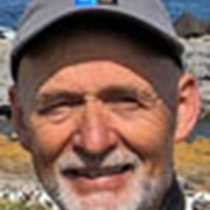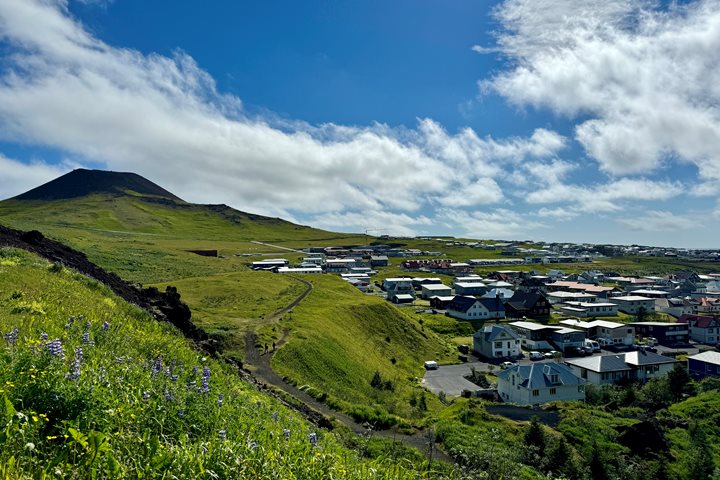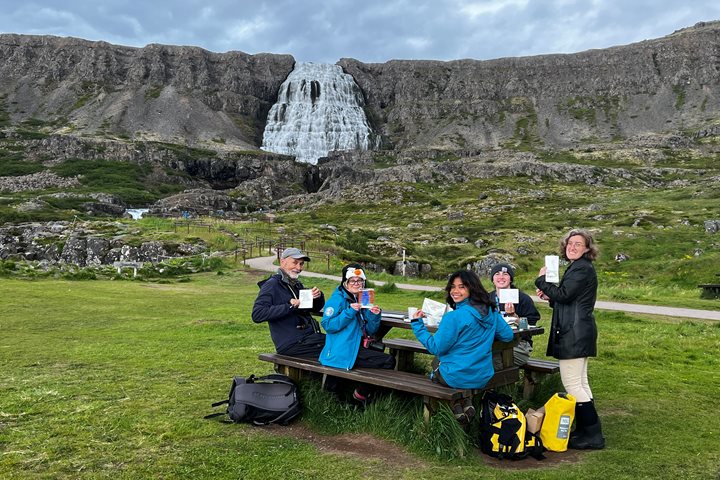In the early morning, we found ourselves just south of the Arctic circle. We were ready to make a landing on Vega Island which is the central part of the UNESCO World Heritage landscape of the Vega Archipelago. The archipelago consists of 6,500 small islands and is particularly famous for its Common eider ducks and the relationship between the locals and eiders. For more than 1,000 years the islanders have fashioned nests for the eiders to make sure that the birds have proper shelter and find protection against predators that might otherwise rob their nests. Eggs and down from the eiders have been an important income source for many families. The down from the eiders would typically provide around half their annual income, so it was important for a family to persuade the birds to breed on their particular property.
During the morning, a good variety of activities were offered. Many guests went hiking in the sunny weather to see the protected landscape and its diversity of birds and plants. Some guests opted for a village tour. Afterwards, we all gathered in the combined museum and World Heritage Information Center where we learned about the natural history of Vega and the importance of the Common eiders in the local culture. Coffee and delicious waffles served at the end was an extra treat that was much appreciated.
During the afternoon, two of our naturalists gave lectures. Julia Huggins taught us about the boreal rainforest, whereas Carl Erik Kilander talked about Norway´s nature and how Norwegians enjoy the outdoors. This was our last expedition day in Norway, and we have started our sailing towards Shetland.







